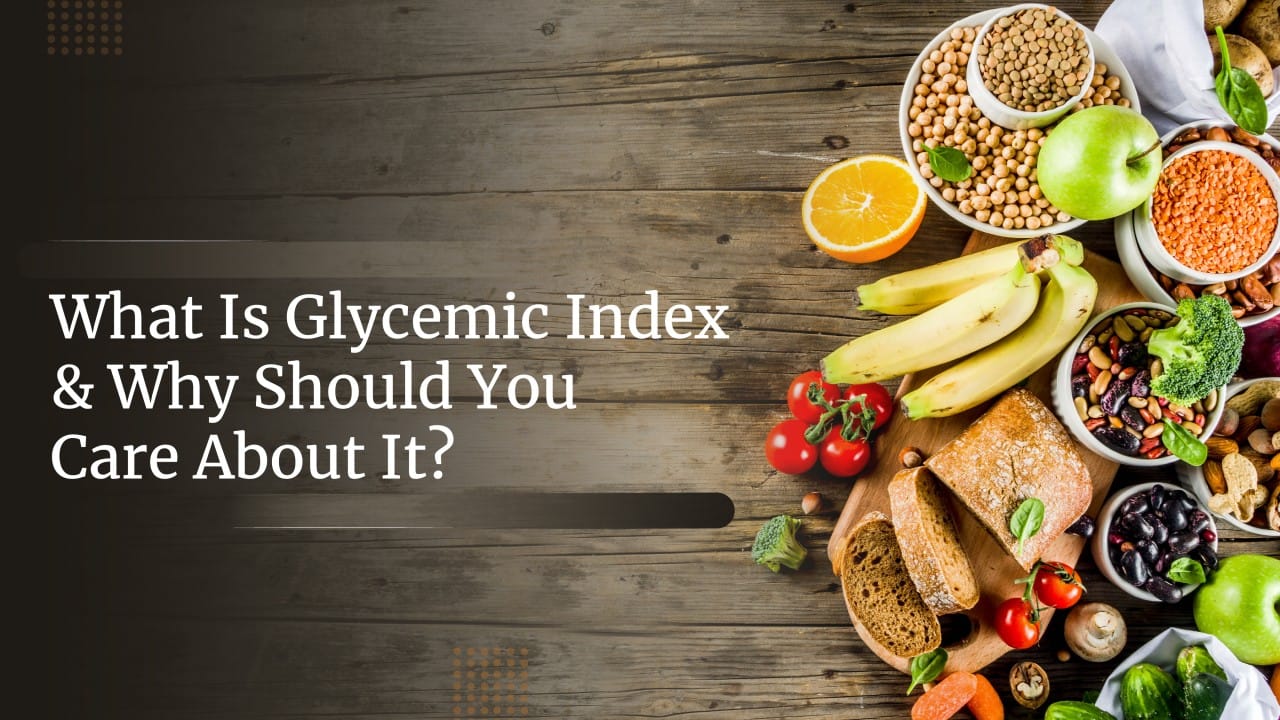The glycemic index (GI) is a valuable tool for understanding how different carbohydrate-containing foods affect blood sugar levels. By assessing the GI of foods, individuals can make informed dietary choices that help manage energy levels, support weight management, and promote overall health. This article will explore the essentials of the glycemic index, its impact on energy dynamics, and practical strategies for incorporating low GI foods into meal planning, ultimately enabling readers to optimize their diets for better health outcomes.
In this article you will find:
Understanding Glycemic Index Basics
The glycemic index (GI) is a crucial concept in nutrition that helps us understand how different carbohydrate-containing foods affect our blood sugar levels. By assessing the GI of foods, individuals can make informed dietary choices that support their health and energy needs. The GI is a numerical scale ranging from 0 to 100, where foods with a higher GI value cause a rapid increase in blood sugar, while those with a lower GI lead to a more gradual rise.
What is Glycemic Index?
The glycemic index measures how quickly a specific food raises blood glucose levels compared to a reference food, typically glucose or white bread. Foods are categorized into three GI ranges:
- Low GI (0-55): These foods are digested and absorbed slowly, resulting in a gradual rise in blood sugar. Examples include legumes, whole grains, and most fruits.
- Medium GI (56-69): Foods in this category cause a moderate increase in blood sugar. Examples include whole grain bread and brown rice.
- High GI (70 and above): These foods are rapidly digested, leading to quick spikes in blood sugar. Common examples include sugary snacks, white bread, and certain processed foods.
Importance of Glycemic Index
Understanding the glycemic index is vital for several reasons:
- Blood Sugar Control: For individuals with diabetes or insulin resistance, managing blood sugar levels is essential. Low GI foods can help stabilize glucose levels and prevent spikes.
- Energy Management: Foods with a lower GI provide sustained energy, making them ideal for athletes and active individuals. They help maintain energy levels throughout the day without the crash associated with high GI foods.
- Weight Management: Low GI foods tend to promote satiety, helping individuals feel full longer and potentially aiding in weight loss efforts.
Factors Influencing Glycemic Index
Several factors can influence the glycemic index of foods, including:
- Food Preparation: Cooking methods can alter the GI. For example, al dente pasta has a lower GI than fully cooked pasta.
- Ripeness: The ripeness of fruits can affect their GI. Ripe bananas have a higher GI compared to green ones.
- Combination with Other Foods: Eating foods together can modify their GI. For instance, combining high GI foods with protein or healthy fats can slow down digestion and lower the overall GI of a meal.
Conclusion
By understanding the glycemic index, individuals can make informed food choices that align with their health goals. Incorporating low GI foods into your diet can lead to better blood sugar control, sustained energy, and effective weight management. For more information on how to choose foods wisely, consider visiting Abbott’s Nutrition page.
Impact of Glycemic Index on Energy Levels
The glycemic index (GI) is not just a number; it plays a significant role in how our bodies generate and manage energy throughout the day. Understanding the impact of the GI on energy levels can help individuals optimize their diets for better performance, mood, and overall well-being. This section explores how different GI foods influence energy dynamics and offers insights into making energy-boosting dietary choices.
How Glycemic Index Affects Energy Release
When we consume carbohydrates, our bodies break them down into glucose, which serves as the primary energy source for our cells. However, the rate at which glucose enters the bloodstream varies significantly depending on the glycemic index of the food consumed:
- High GI Foods: Foods with a high GI, such as white bread, sugary drinks, and processed snacks, lead to rapid spikes in blood sugar levels. This quick surge provides an immediate energy boost but is often followed by a sharp decline in energy, commonly referred to as a “sugar crash.” This fluctuation can leave individuals feeling fatigued and irritable.
- Low GI Foods: In contrast, low GI foods like whole grains, legumes, and most fruits release glucose more slowly into the bloodstream. This gradual release provides a steady supply of energy, helping to maintain consistent energy levels throughout the day and preventing the dreaded energy dips.
The Role of Glycemic Index in Physical Performance
For athletes and active individuals, understanding the glycemic index can be particularly beneficial. Consuming low GI foods before exercise can enhance endurance and performance by:
- Providing Sustained Energy: Low GI carbohydrates can fuel prolonged physical activity without causing rapid fluctuations in energy levels.
- Improving Recovery: Post-exercise, combining low GI foods with protein can aid in recovery by replenishing glycogen stores more effectively.
Energy and Mental Performance
The impact of glycemic index extends beyond physical performance; it also affects cognitive function. Research indicates that maintaining stable blood sugar levels can enhance concentration, memory, and overall mental clarity. High GI foods may lead to cognitive fatigue due to the rapid fluctuations in energy, while low GI foods promote sustained focus. Some benefits include:
- Improved Focus: Low GI meals can help maintain attention and concentration, making them ideal for students and professionals who require sustained mental effort.
- Reduced Mood Swings: Stable blood sugar levels contribute to more consistent moods, reducing irritability and anxiety associated with energy crashes.
Practical Tips for Managing Glycemic Index
To harness the benefits of the glycemic index for energy management, consider the following strategies:
- Choose Whole Foods: Opt for whole grains, fruits, vegetables, and legumes, which typically have lower GI values.
- Balance Your Plate: Combine carbohydrates with proteins and healthy fats to slow digestion and promote stable energy levels.
- Monitor Portions: Even low GI foods can impact blood sugar if consumed in large quantities. Pay attention to portion sizes.
By incorporating these practices into your diet, you can optimize your energy levels throughout the day. For more insights into the relationship between diet and energy management, consider exploring resources from Dr. Casey Means, who discusses metabolic health and the importance of balanced energy levels.
Choosing Low Glycemic Index Foods for Optimal Health
Incorporating low glycemic index (GI) foods into your diet is a powerful strategy for enhancing overall health and well-being. These foods not only help regulate blood sugar levels but also support sustained energy, weight management, and improved metabolic health. This section will explore practical tips for selecting low GI foods and highlight some nutritious options that can easily fit into your daily meals.
Understanding Low Glycemic Index Foods
Low GI foods are those that have a glycemic index of 55 or less. They are digested slowly, leading to a gradual release of glucose into the bloodstream. This slow digestion helps maintain stable blood sugar levels, which is essential for optimal health. Here are some categories of low GI foods to consider:
- Whole Grains: Foods like quinoa, barley, and whole grain bread are excellent sources of complex carbohydrates that provide lasting energy.
- Legumes: Beans, lentils, and chickpeas are not only low in GI but also high in fiber and protein, making them a nutritious addition to any meal.
- Fruits: Most fruits, especially berries, apples, and pears, have a low GI and are packed with vitamins, minerals, and antioxidants.
- Vegetables: Non-starchy vegetables like spinach, broccoli, and peppers are low GI and provide essential nutrients with very few calories.
- Nuts and Seeds: Almonds, walnuts, and chia seeds are nutritious snacks that help control hunger and provide healthy fats.
Benefits of Choosing Low Glycemic Index Foods
Opting for low GI foods offers several health benefits:
- Weight Management: Low GI foods promote satiety, helping you feel full longer and reducing the likelihood of overeating.
- Improved Energy Levels: With a steady release of energy, low GI foods can help prevent energy crashes, keeping you alert and focused throughout the day.
- Better Blood Sugar Control: Low GI diets are particularly beneficial for individuals with diabetes or insulin resistance, as they help manage blood sugar levels more effectively.
Practical Tips for Incorporating Low Glycemic Index Foods
Here are some actionable strategies to help you integrate low GI foods into your daily routine:
- Start Your Day Right: Choose a low GI breakfast option such as oatmeal topped with berries or a smoothie made with spinach and almond milk.
- Snack Wisely: Opt for snacks like hummus with carrot sticks or a handful of nuts instead of high-sugar snacks.
- Plan Your Meals: Incorporate low GI foods into your meals by using whole grains as a base, adding plenty of vegetables, and choosing lean proteins.
- Experiment with Recipes: Look for recipes that emphasize low GI ingredients, such as lentil salads, quinoa bowls, or stir-fries with non-starchy vegetables.
Resources for Further Exploration
To better understand the benefits of low GI foods and how to implement them into your diet, consider visiting Abbott’s Nutrition page, which provides valuable insights into glucose management and overall nutrition.
By consciously choosing low glycemic index foods, you can enhance your health, manage your weight, and maintain stable energy levels throughout your day.
Incorporating Glycemic Index Awareness into Meal Planning
Integrating glycemic index (GI) awareness into your meal planning can significantly enhance your overall health and well-being. By making informed choices based on the GI of foods, you can create balanced meals that promote stable blood sugar levels, sustained energy, and optimal nutrition. This section provides practical strategies for incorporating GI awareness into your meal planning routine.
Understanding Your Glycemic Index Goals
Before diving into meal planning, it’s essential to understand your individual goals regarding the glycemic index. Whether you aim to manage diabetes, improve athletic performance, or simply maintain a healthy lifestyle, your approach may vary. Consider the following:
- For Blood Sugar Control: Focus on consistently choosing low GI foods (55 or less) to help stabilize blood sugar levels.
- For Weight Management: Prioritize meals that keep you feeling full longer by incorporating fiber-rich, low GI foods.
- For Athletic Performance: Plan meals that include low to moderate GI foods to fuel workouts and support recovery.
Meal Planning Strategies
Here are effective strategies to incorporate GI awareness into your meal planning:
- Plan Weekly Menus: Dedicate time each week to plan your meals. Include a variety of low GI foods, ensuring that each meal is balanced with proteins, healthy fats, and fiber.
- Batch Cooking: Prepare large portions of low GI meals, such as quinoa salads or lentil soups, to have healthy options readily available throughout the week.
- Smart Snacking: Include low GI snacks in your meal plan, such as Greek yogurt with berries, to maintain energy levels between meals.
- Use a GI Chart: Keep a glycemic index chart handy when planning meals to easily identify low and moderate GI foods.
Sample Meal Ideas
To help you get started, here are some sample meal ideas that incorporate low GI foods:
- Breakfast: Overnight oats topped with chia seeds, nuts, and fresh berries.
- Lunch: Quinoa salad with black beans, diced vegetables, and a lemon vinaigrette.
- Dinner: Grilled chicken served with steamed broccoli and brown rice.
- Snacks: Sliced apple with almond butter or a small handful of mixed nuts.
Monitoring and Adjusting Your Plan
As you incorporate GI awareness into your meal planning, it’s important to monitor how your body responds to different foods. Keep a food diary to track your meals, energy levels, and any fluctuations in blood sugar. This will help you identify which foods work best for you and allow you to adjust your meal plan accordingly.
For additional insights into how to effectively manage your diet and improve your health, consider exploring resources from Dr. Casey Means, who discusses the importance of metabolic health and dietary choices.
By integrating glycemic index awareness into your meal planning, you can create a sustainable and health-promoting eating pattern that meets your individual needs and goals. The glycemic index (GI) is a critical tool for understanding how different carbohydrates affect blood sugar levels, with foods categorized as low, medium, or high GI. Low GI foods (55 or less) provide gradual energy release, helping to stabilize blood sugar, promote satiety, and support weight management. Incorporating these foods into your diet—such as whole grains, legumes, fruits, and non-starchy vegetables—can enhance overall health and energy levels.
When planning meals, focus on low GI options to meet specific health goals, whether for blood sugar control, weight management, or athletic performance. Strategies include planning weekly menus, batch cooking, and choosing smart snacks. Monitoring your body’s response to different foods can further refine your meal plan, ensuring it aligns with your health objectives. For additional guidance, resources from experts like Dr. Casey Means can provide valuable insights into effective dietary choices.




